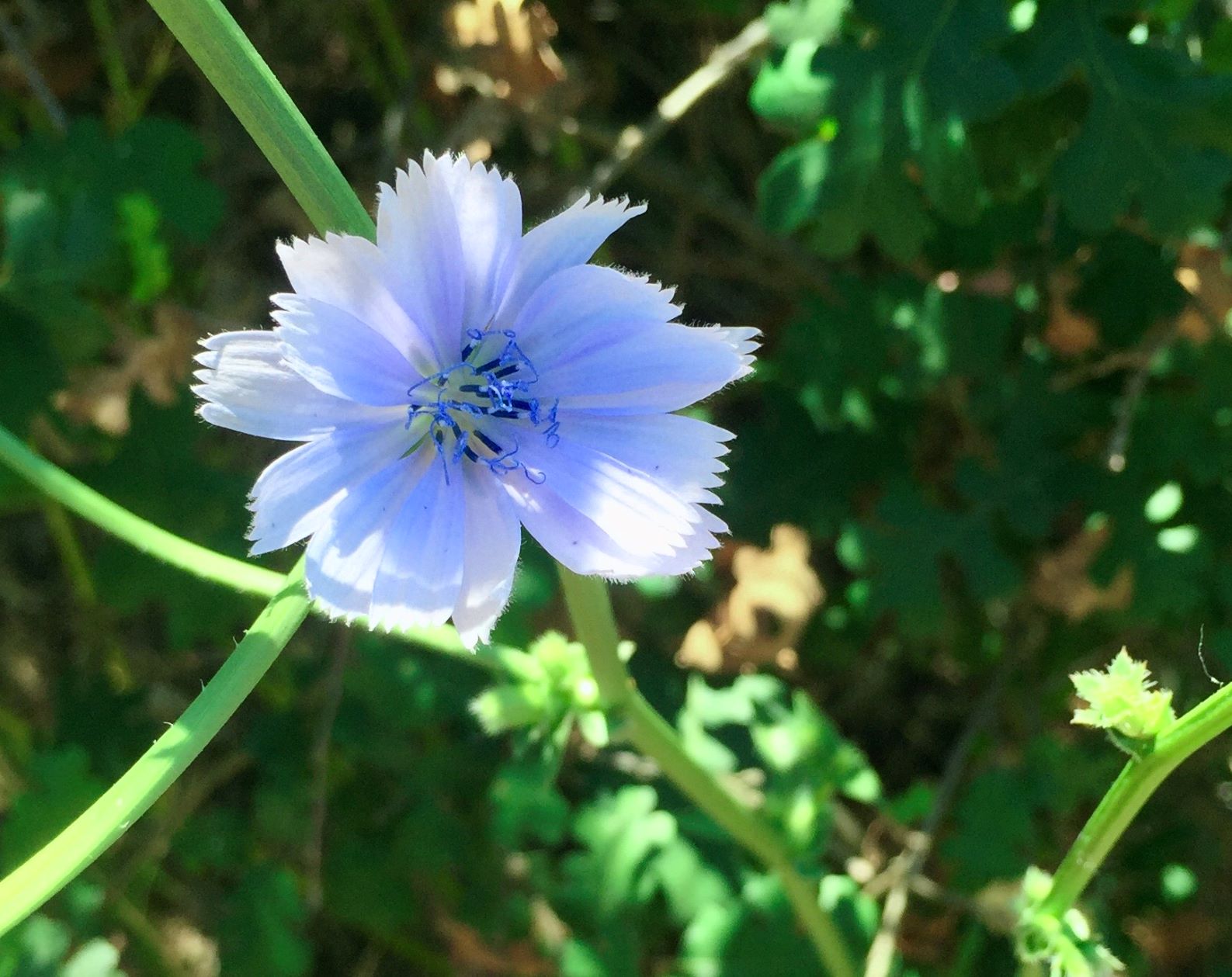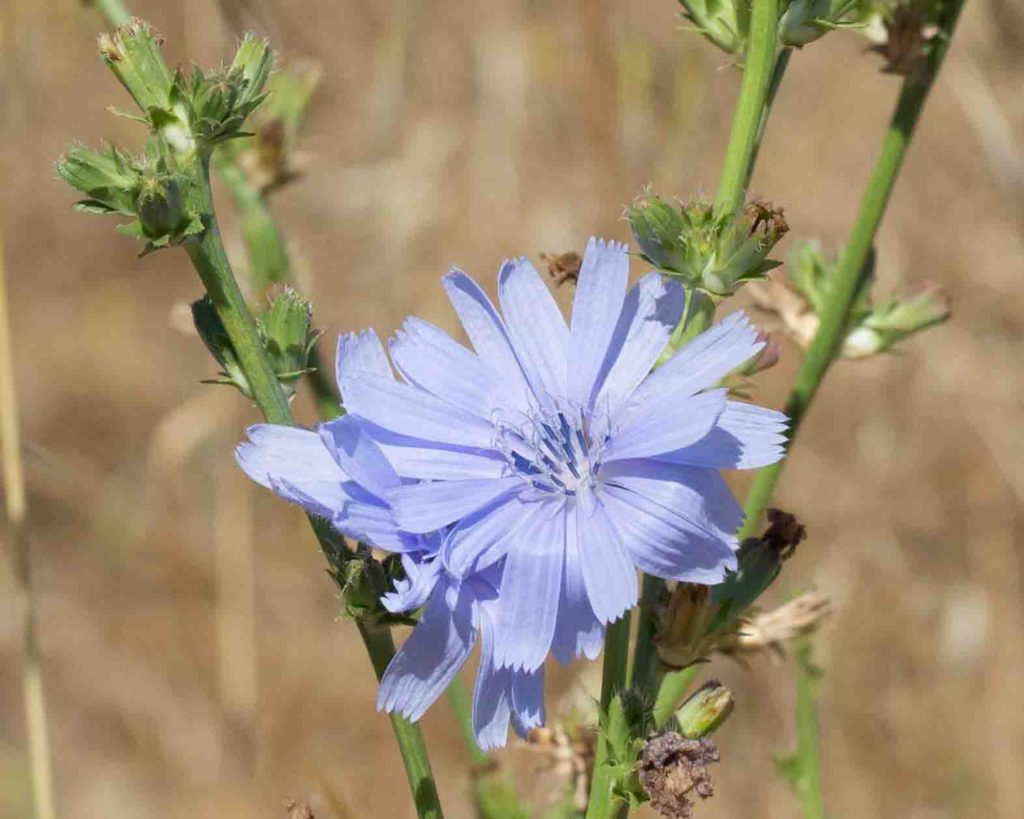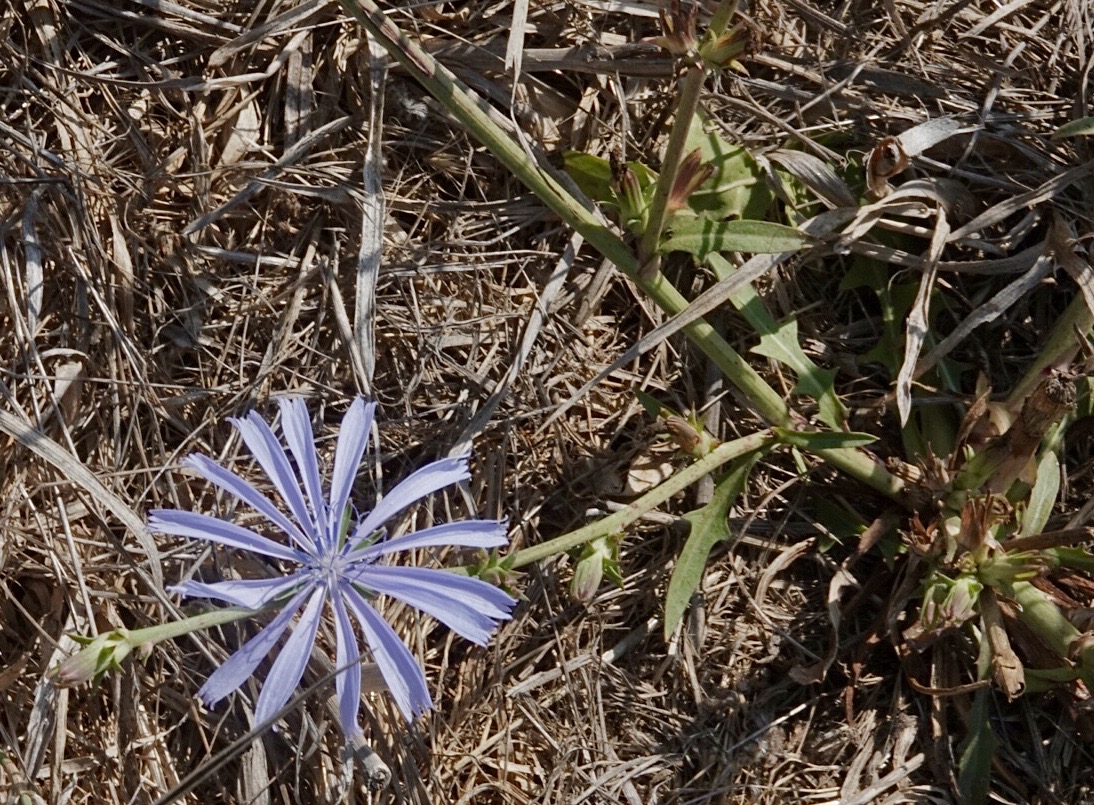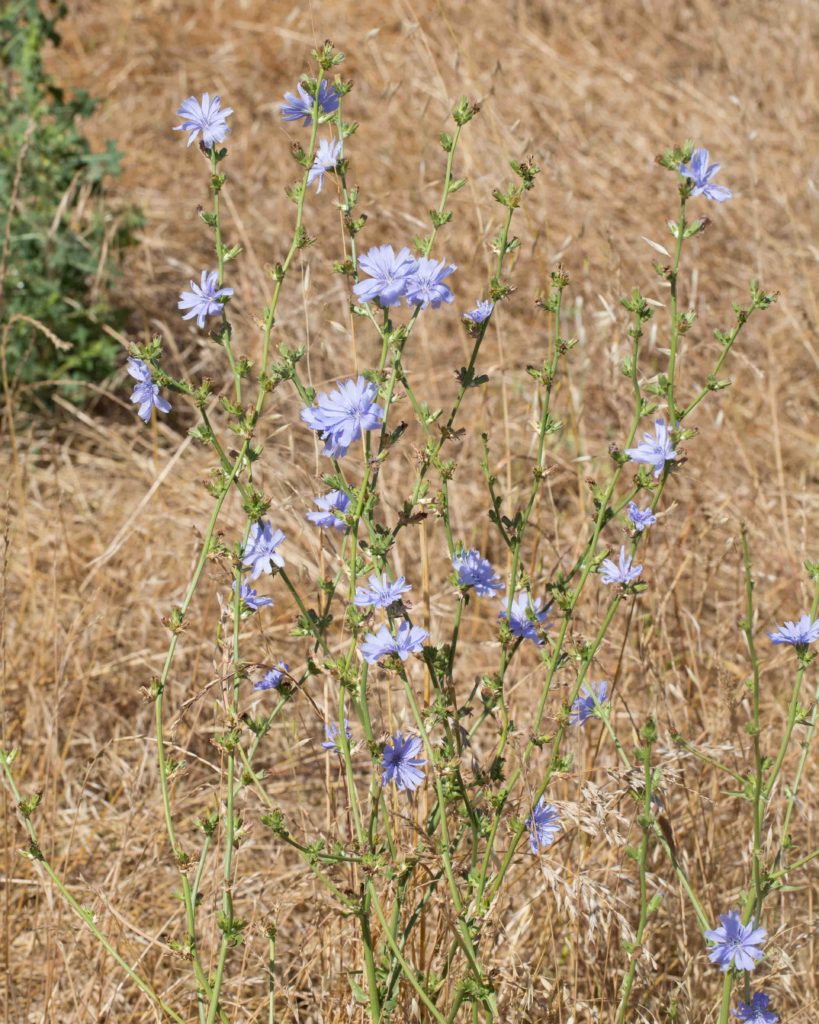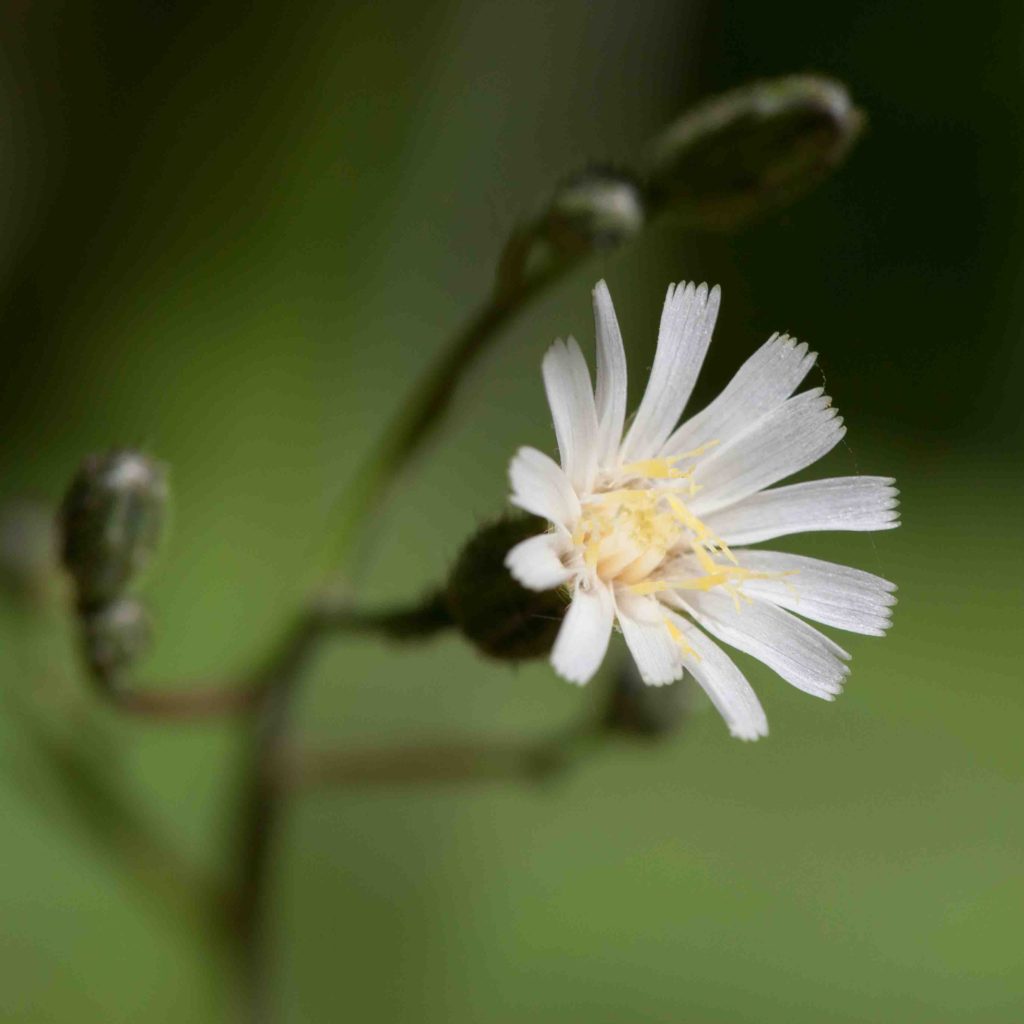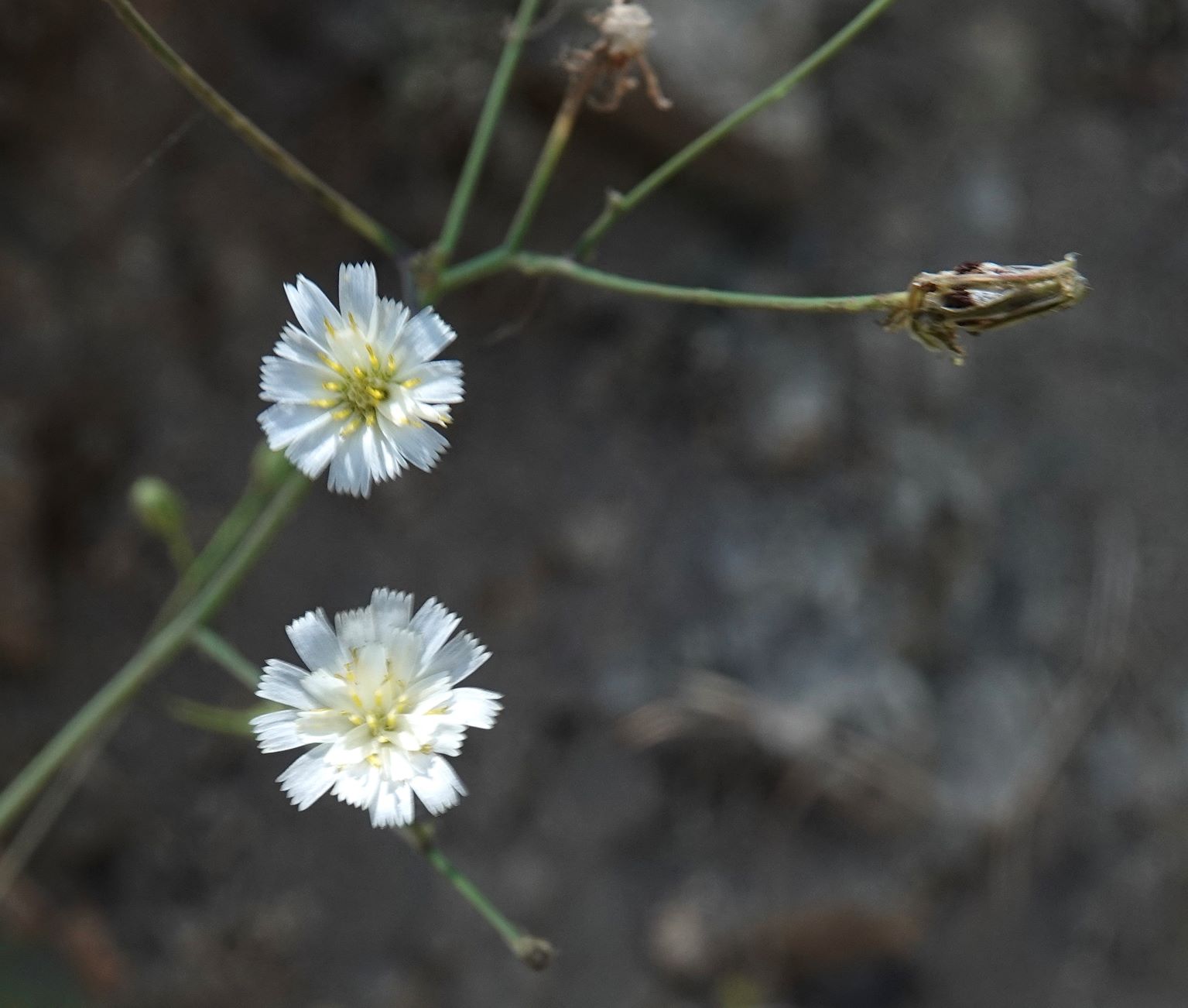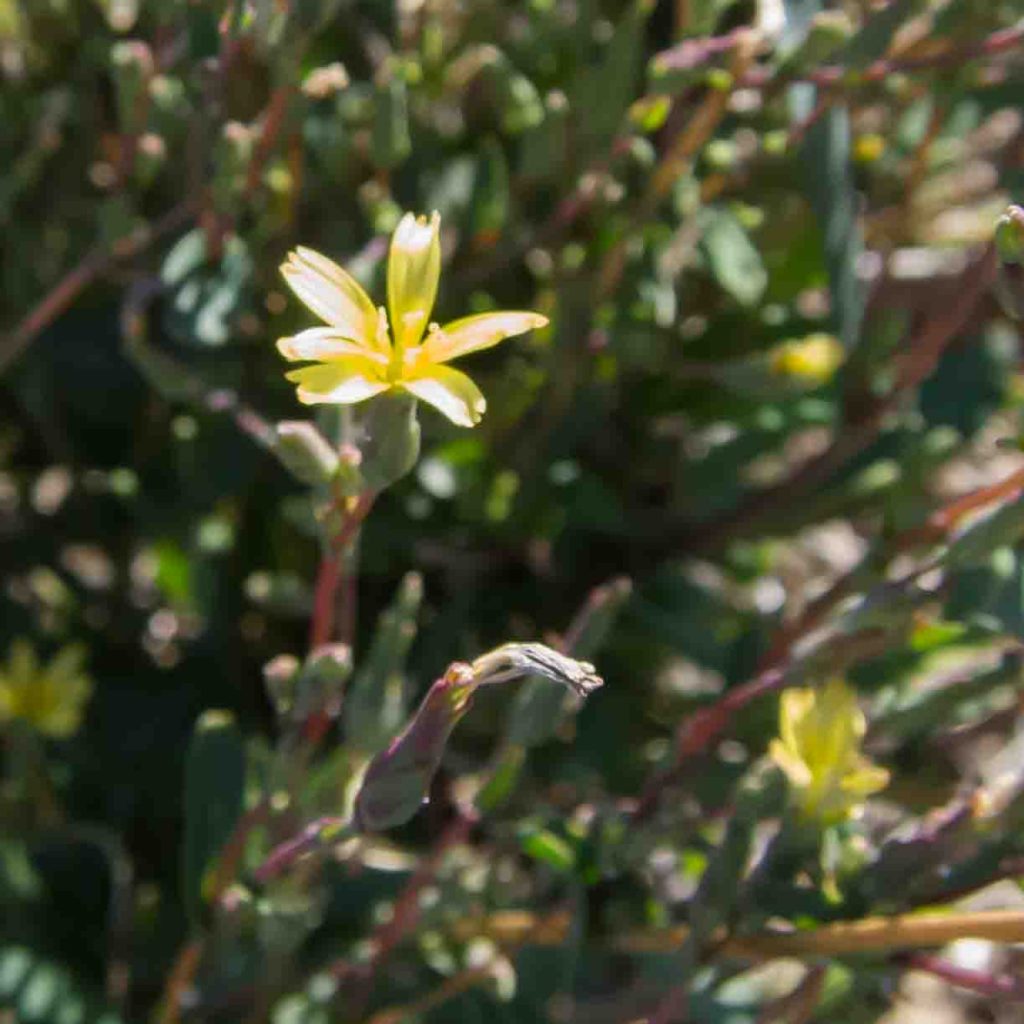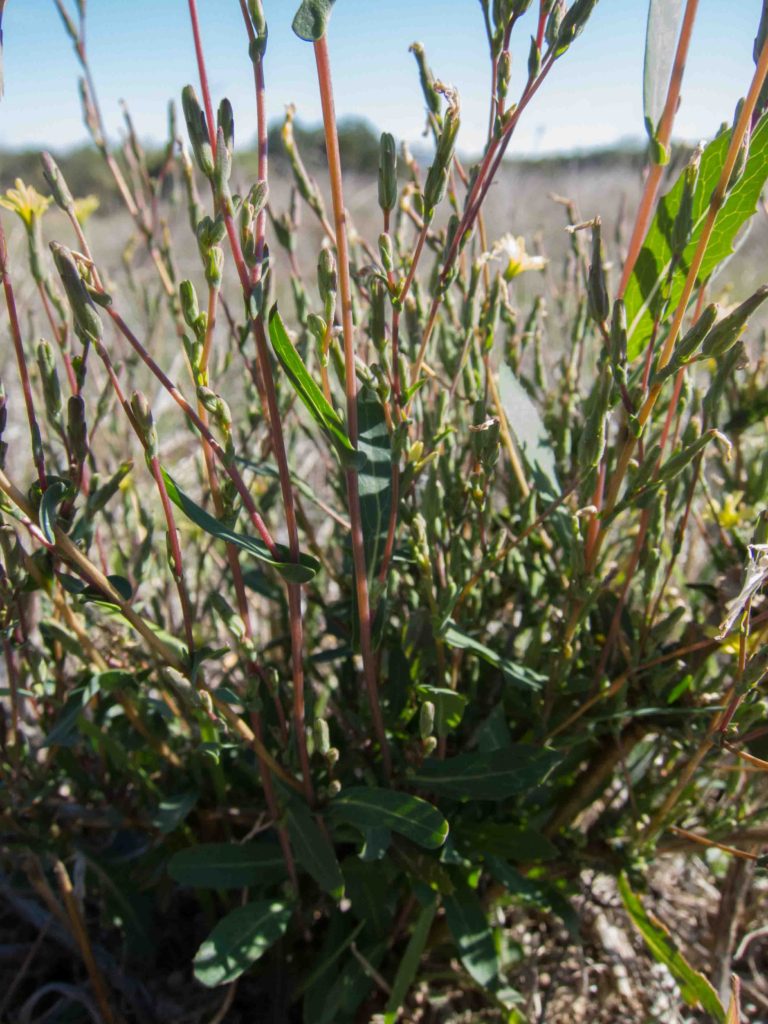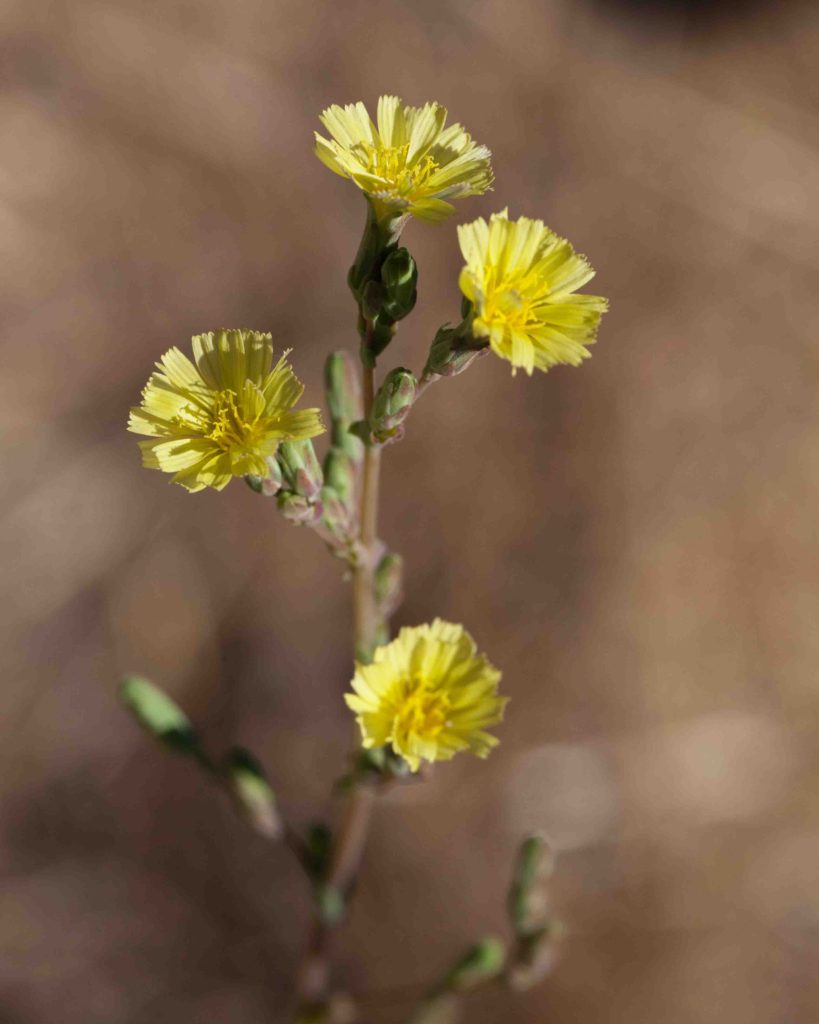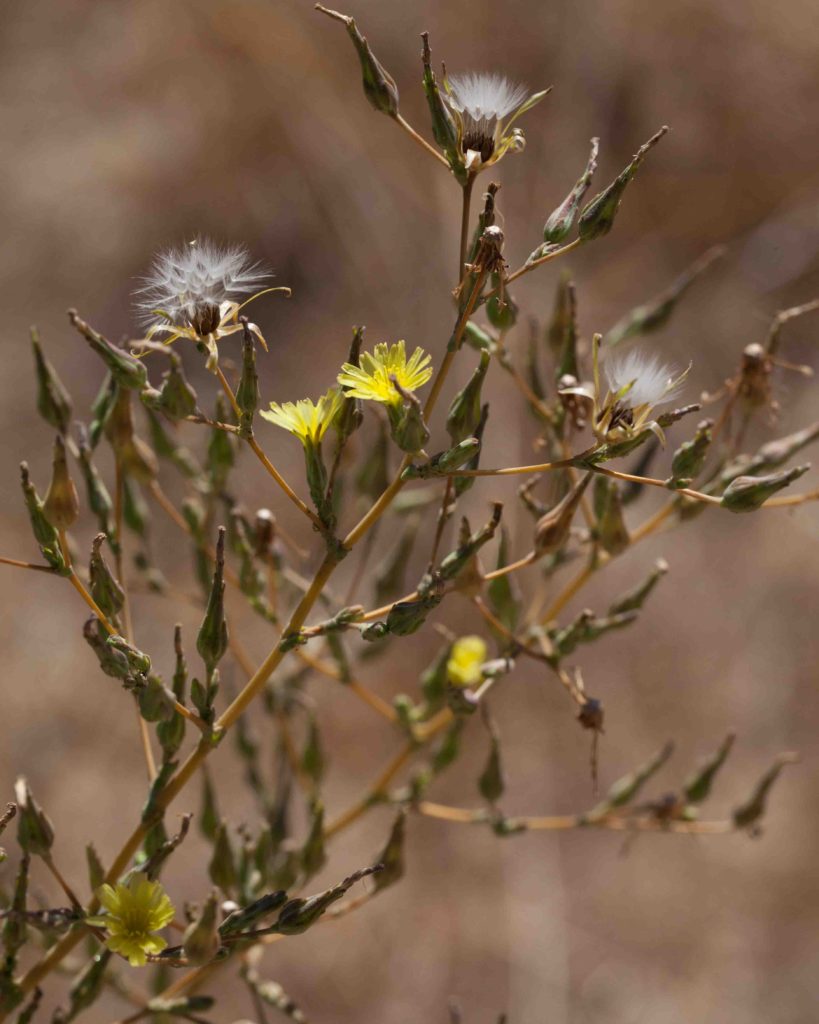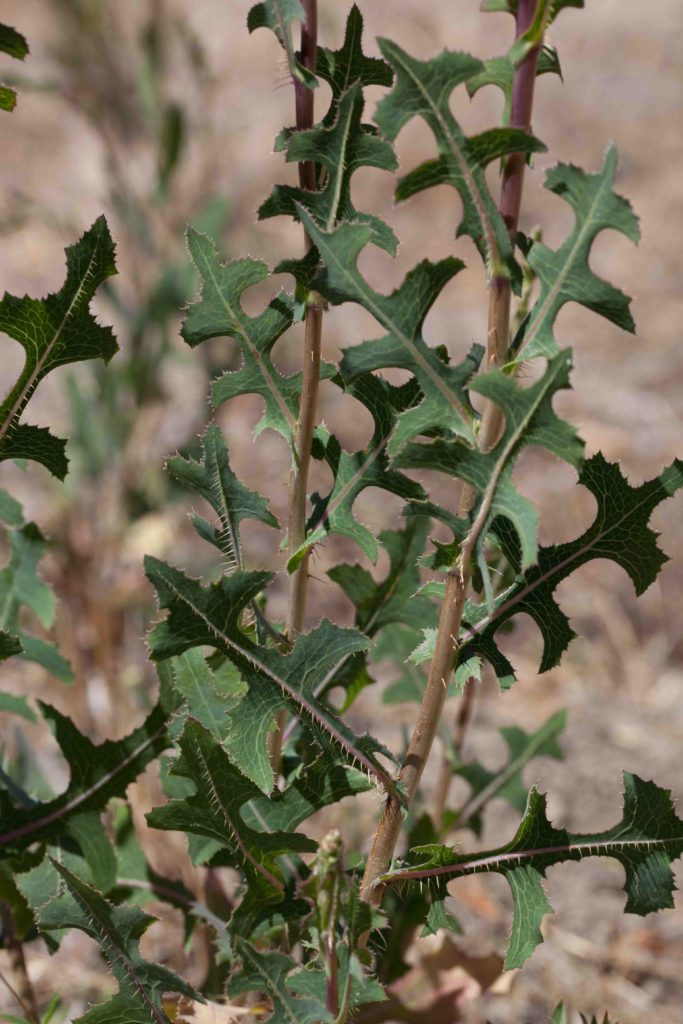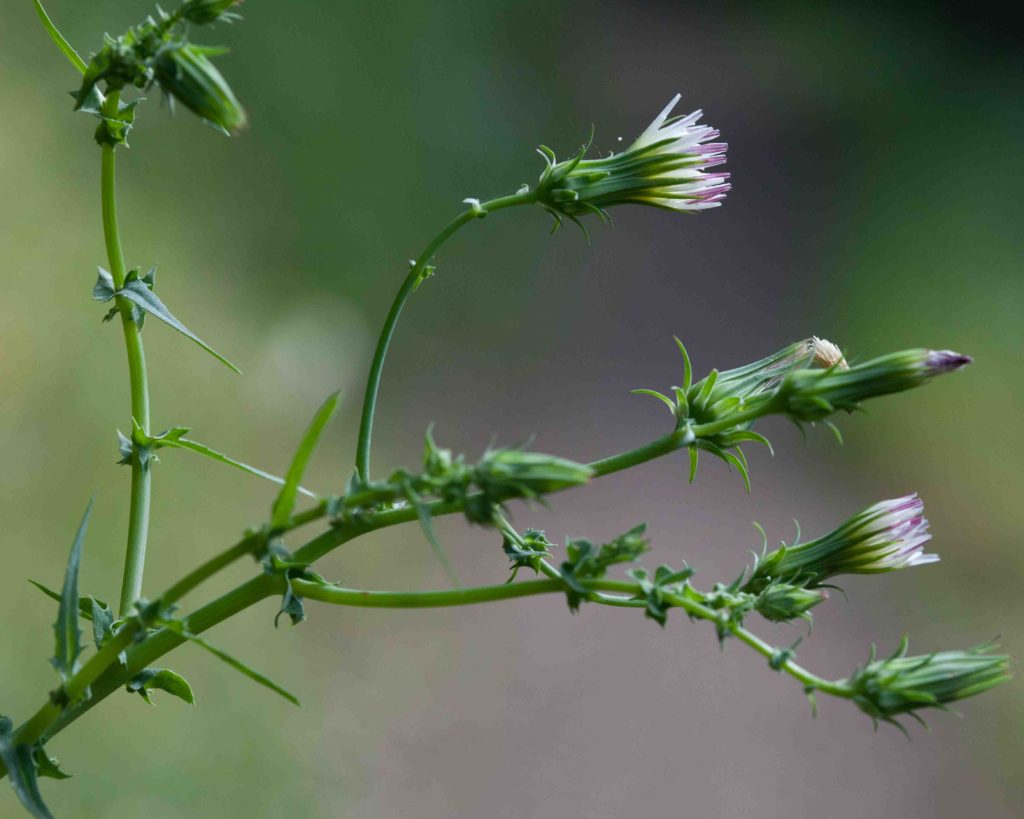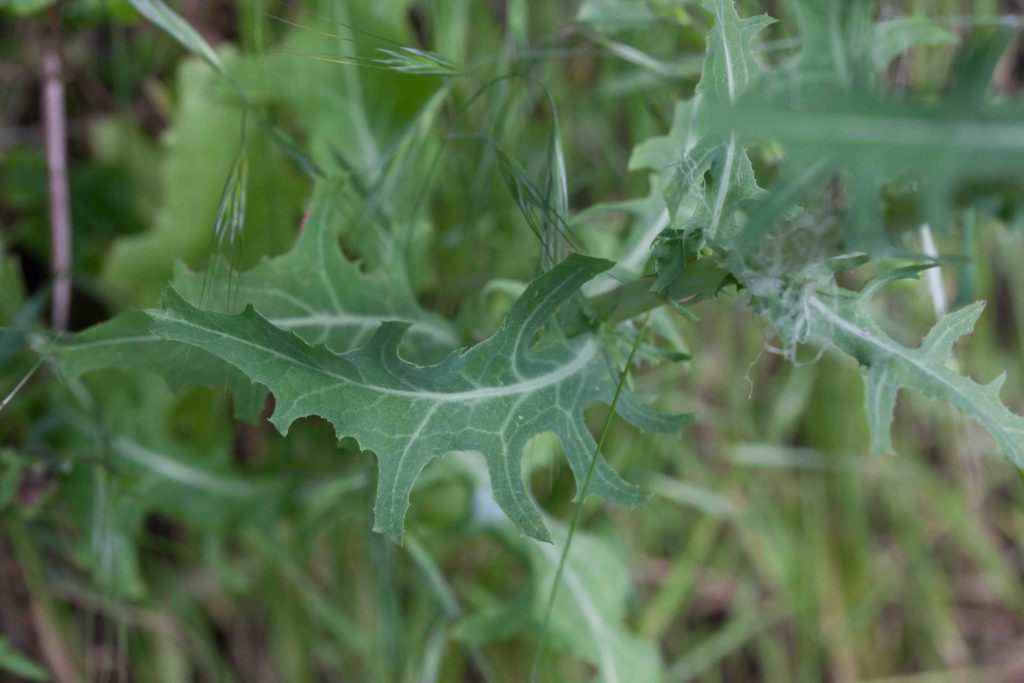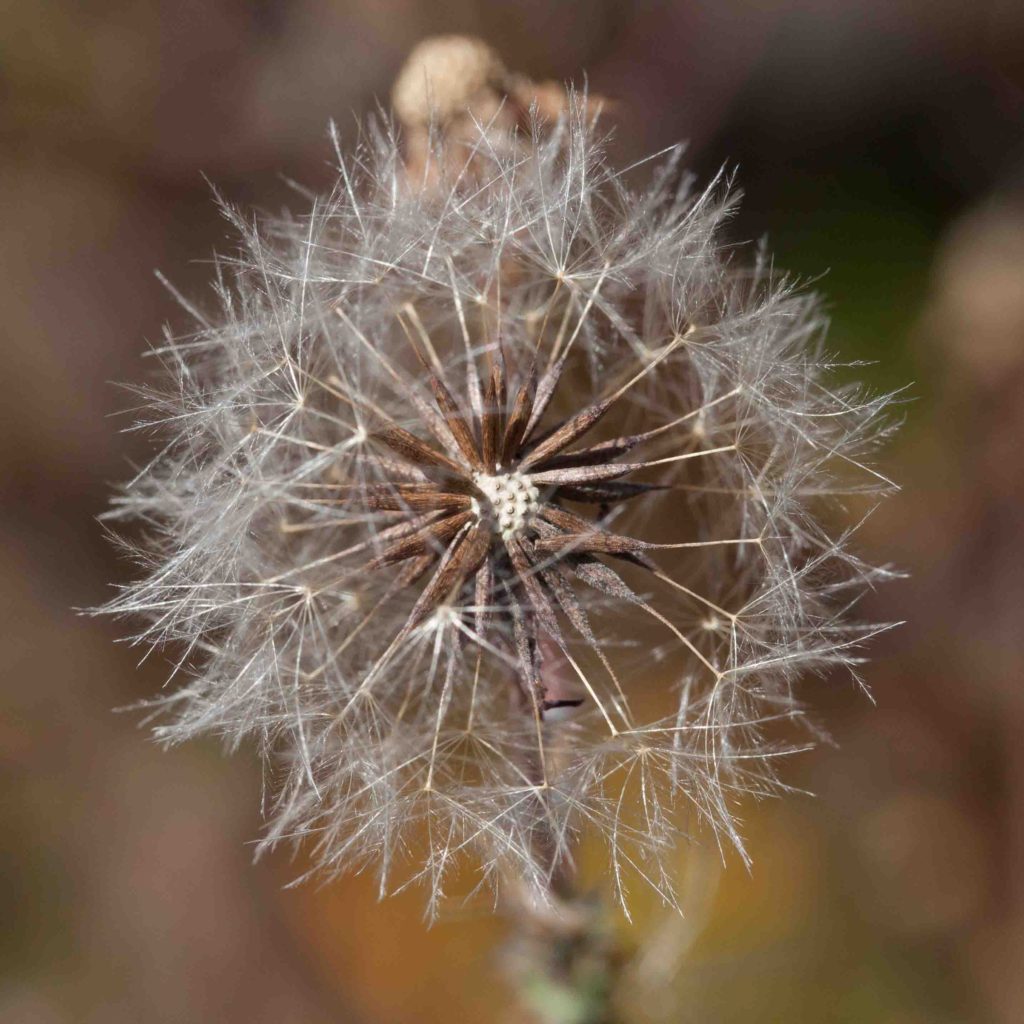Asteraceae: Sunflower Family – Cichorieae (Dandelion) Tribe: Chicory & Lettuce
The Sunflower family is a very large family with over 25,000 members. Botanists subdivide the family into a number of tribes, of which 14 are present in Monterey County. The Cichorieae (Dandelion) tribe has several distinctive features. First, they all have stems with milky sap. Second, they do not have disk and ray flowers like typical daisies. Instead they have “ligules”, which resemble strap-like ray flowers. Unlike ray flowers, ligules have both male and female parts – a necessity for reproduction in the absence of disc flowers. A third difference is that ray flowers have 0–3 lobes at the tip; ligules have 5. This page covers a mixture of natives and non-natives, plus three relatives of cultivated lettuce.
Chicory – Cichorium intybus
Blooms:
All year
Plant Height:
40–200 cm
Flower Size:
Large
Origin:
Europe
Habitat:
Roadsides & disturbed places below 1500 m
Notes:
This is a bushy perennial with unmistakable bright blue flowers (white or pink forms are occasionally found). Some members of this genus are grown for their roots, which are used to make a coffee substitute. New blooms appear in the morning and are more or less spent by afternoon. Very common in its native Europe. Photos #1 and 3 by CJH.
White-flowered Hawkweed – Hieracium albiflorum
Blooms:
May–Sept
Plant Height:
40–75 cm
Flower Size:
Medium
Origin:
Native
Habitat:
Woodland
Notes:
Like the California Chicory (Rafinesquia californica, see below), this has panicles of small, pure white flowers. But it is distinguished by its mostly basal, hairy, entire leaves. The stems are also covered with soft, white hairs. The buds lack the characteristic recurved phyllaries of the California Chicory. Photo #2 by CJH.
Willow Lettuce – Lactuca saligna
Blooms:
Mar–June
Plant Height:
50–100 cm
Flower Size:
Small
Origin:
Europe
Habitat:
Roadsides, grassland
Notes:
The inflorescence has few to many heads, in narrow, panicle-like clusters. Each flower has 5–12 rectangular, pale yellow ligules. The upper cauline leaves are linear to lanceolate, entire with a hastate, somewhat clasping base — quite different from those of Prickly Lettuce (Lactuca serriola, see below).
Prickly Lettuce – Lactuca serriola
Blooms:
May–Oct
Plant Height:
50–300 cm
Flower Size:
Small
Origin:
Europe
Habitat:
Disturbed places
Notes:
This is the closest wild relative of cultivated lettuce, although it doesn’t taste good. The numerous flowers are borne on loose panicles with 14–20 pale yellow ligules. The flowers usually close by midday. The leaves are very distinctive, and come in two quite different forms. One has very coarse serrations, and the other is obovate and entire, both with spiny margins. The midrib on the underside of the leaf is also prickly.
California Chicory – Rafinesquia californica
Blooms:
Apr–July
Plant Height:
0.2–1.5 m
Flower Size:
Medium
Origin:
Native
Habitat:
Open scrub, woodland
Notes:
Although very different from the non-native Chicory, this flower can be mistaken for White-flowered Hawkweed (Hieracium albiflorum, see above). But the coarsely toothed glabrous leaves are quite distinct. Also distinctive are the recurved outer phyllaries, and the reddish stripe on the outside of some of the ligules. This plant can be many-branched, with multiple panicled clusters.
